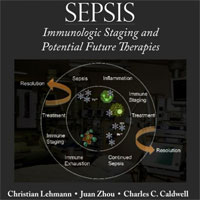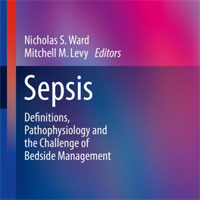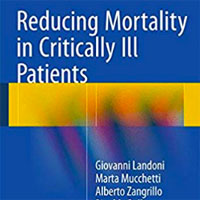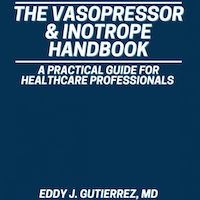Tag: therapy
Feasibility, Safety, and Utility of Advanced Critical Care Transesophageal Echocardiography Performed by Pulmonary/Critical Care Fellows in a Medical ICU
Critical care transesophageal echocardiography is feasible, safe, and has clinical utility. It can be safely and effectively performed by fellows within the context of their critical care training with faculty supervision.... read more
Occupational Therapy for Delirium Management in Elderly Patients without Mechanical Ventilation in an ICU
Delirium has negative consequences such as increased mortality, hospital expenses and decreased cognitive and functional status. This research aims to determine the impact of occupational therapy intervention in duration,... read more
Oxygen Therapy in Acute Resuscitation
At present, evidence is lacking to support routine liberal oxygen administration in acutely ill patients and, in most circumstances, a reasonable approach is to titrate supplemental oxygen to achieve an arterial oxygen saturation... read more
Noninvasive Ventilation as Acute Therapy
Noninvasive ventilation (NIV) is widely used in ICU patients to treat or to prevent acute respiratory failure (ARF). Whereas its physiological effects are clearly beneficial in hypercapnic patients, it could be deleterious... read more
Management of Refractory Vasodilatory Shock
Refractory shock is a lethal manifestation of cardiovascular failure defined by an inadequate hemodynamic response to high doses of vasopressor medications. Approximately 7% of critically ill patients will develop refractory... read more
Effects of High-Flow Nasal Cannula on the Work of Breathing in Patients Recovering From ARF
High-flow nasal cannula, when set at 60 L/min, significantly reduces the indexes of respiratory effort in adult patients recovering from acute respiratory failure (ARF). This effect is associated with an improvement in... read more
Unsupervised Analysis of Transcriptomics in Bacterial Sepsis Across Multiple Datasets Reveals Three Robust Clusters
The three sepsis subtypes may represent a unifying framework for understanding the molecular heterogeneity of the sepsis syndrome. Further study could potentially enable a precision medicine approach of matching novel immunomodulatory... read more
Pooled Analysis of Higher vs Lower Blood Pressure Targets for Vasopressor Therapy Septic and Vasodilatory Shock
Targeting higher blood pressure targets may increase mortality in patients who have been treated with vasopressors for more than 6h. Lower blood pressure targets were not associated with patient‑important adverse events... read more
Increased Hospital-Based Physical Rehabilitation and Information Provision After ICU Discharge
Post-ICU hospital-based rehabilitation, including increased physical and nutritional therapy plus information provision, did not improve physical recovery or HRQOL, but improved patient satisfaction with many aspects of recovery.... read more
Psychology Consultation Patterns in a Medical ICU
Intensive care unit (ICU) survivors frequently experience long-lasting mental health, cognitive, and physiologic challenges. Psychologists have a role in providing interventions to reduce patient distress during critical... read more
Intrathoracic Pressure Regulation Therapy Applied to Ventilated Patients for Treatment of Compromised Cerebral Perfusion from Brain Injury
These data support the notion that active intrathoracic pressure regulation, in this limited evaluation, can successfully augment cerebral perfusion by lowering intracranial pressure and increasing mean arterial pressure... read more
Mobilization is Feasible in Intensive Care Patients Receiving Vasoactive Therapy
In our ICU, patients mobilized on approximately one-third of vasoactive days. Clinicians should anticipate a higher risk of hypotension during mobilization in patients receiving vasoactive therapy, which may require transient... read more
Effect of Titrating PEEP with Esophageal Pressure-Guided Strategy vs Empirical High PEEP-Fio2 Strategy on Death and Days Free From Mechanical Ventilation Among Patients With ARDS
Among patients with moderate to severe Acute Respiratory Distress Syndrome (ARDS), PES-guided positive end-expiratory pressure (PEEP), compared with empirical high PEEP-Fio2, resulted in no significant difference in death... read more
I Spent 4 Weeks Near Death In The ICU
I spent 4 weeks near death in the ICU. Here's what I learned struggling for my life. My mind and body had to relearn everything: how to brush my hair, put on socks and take a sit-down shower. Although it was frustrating to... read more
Choice of Catheter Size for Infants in Continuous Renal Replacement Therapy
Small size central vascular catheters display optimal rheologic performances in terms of pressures and flows particularly when the renal replacement therapy (RRT) device is equipped with pumps proportional to central vascular... read more
Guidelines for the Management of Pediatric Severe Traumatic Brain Injury
Update of the Brain Trauma Foundation Guidelines, Third Edition. Severe Traumatic Brain Injury in Infants, Children, and Adolescents in 2019: Some Overdue Progress, Many Remaining Questions, and Exciting Ongoing Work in the... read more
Complications of Regional Citrate Anticoagulation: Accumulation or Overload?
Based on recent recommendations, the use of Regional Citrate Anticoagulation (RCA) is likely to increase dramatically throughout the world. RCA protocols should aim to minimize the amount of net citrate load delivered to... read more
Considerations in the Diagnosis of Idiopathic Pulmonary Fibrosis
The clinical practice guideline on diagnosis of idiopathic pulmonary fibrosis (IPF) by Raghu and colleagues has been helpful in addressing the complexities of radiological and pathological features in diagnosing IPF. The... read more
New Guidelines for Hospital-acquired Pneumonia/Ventilator-associated Pneumonia
American and European guidelines have many areas of common agreement such as limiting antibiotic duration. Both guidelines were in favor of a close clinical assessment. Neither recommended a regular use of biomarkers but... read more
Antibiotic Treatment of Hospital-acquired Pneumonia
Although more prospective therapy trials of Hospital-acquired Pneumonia (HAP) are needed, based on currently available data, it is possible to use an approach that provides appropriate therapy without the overuse of broad-spectrum... read more
Did I Start the Opioid Epidemic?
Prescription opioid abuse is at epidemic levels. Opioids diverted from friends and family members who have legitimate prescriptions are a major source of abused prescription opioids. Nurses are vital to any effort to combat... read more
Number Needed to Treat
Effectively communicating clinical trial results to patients and clinicians is a requirement for appropriate application in clinical practice. In a recent issue of JAMA, Zhao et al1 reported the results from a randomized... read more









